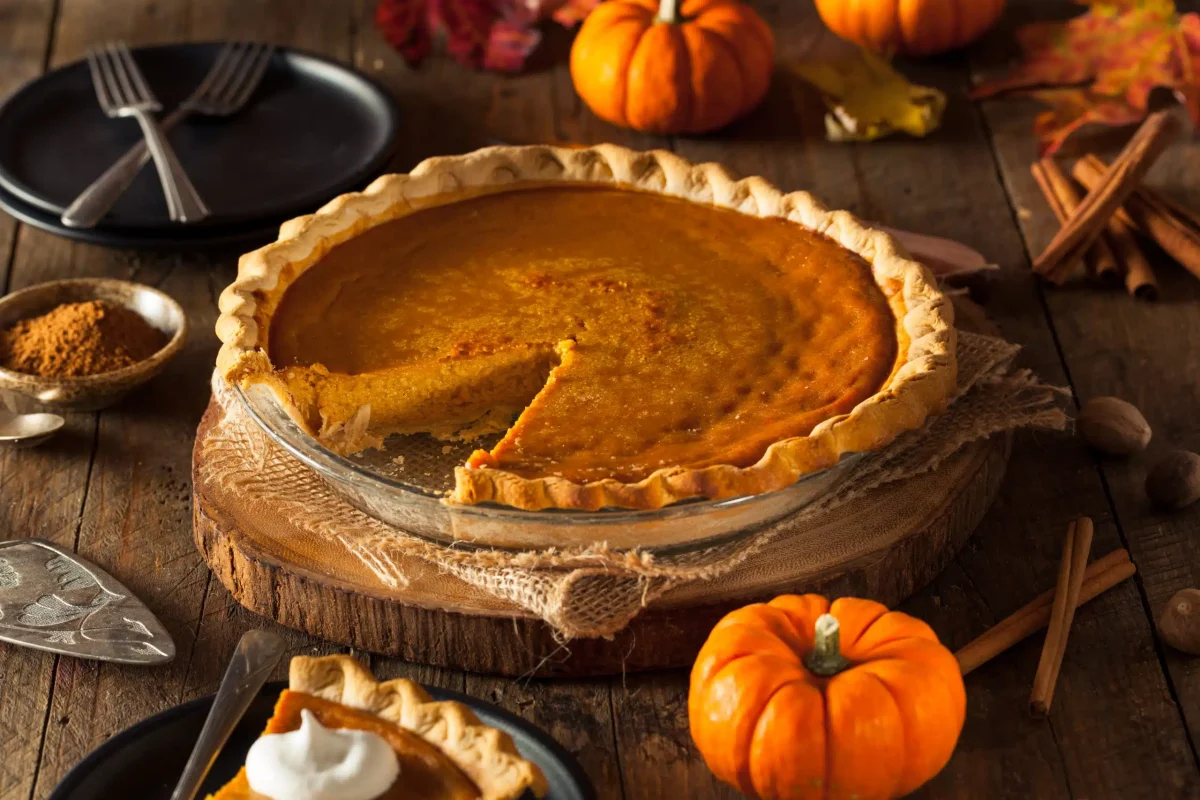As the weather cools and the leaves change, nothing says fall like a fresh slice of pumpkin pie. Pumpkin pie is a seasonal favorite that perfectly represents the season, but behind it lies a journey that brings farmers, processors, and bakers together. Pumpkins travel from fields to kitchens, becoming a dessert that captures the cozy essence of fall with warm spices like cinnamon, nutmeg, and ginger.
Pumpkins are typically planted in the spring, thriving particularly in the warmer climates with nutrient-rich soil. Because of this, States like Illinois, California, and Ohio are major pumpkin producers. Farmers nurture the plants throughout the summer, ensuring they get enough water and are protected from pests. Pumpkin vines need plenty of space. Smaller varieties tend to be planted 2 to 3 feet apart, while larger ones need about 5 feet. Drip irrigation helps keep the soul and the leaves dry, which helps prevent disease. Pruning is another critical step, encouraging fewer but more giant pumpkins to grow. Once the pumpkins are ripened, the farmers either have to hand–pick them or use machines to harvest them. Afterward, the pumpkins are cured in the sun for 10-14 days to help them last longer, up to three months in excellent, dry storage. There are different types of pumpkins, such as pie pumpkins, which are smaller and sweeter and are the preferred choice for baking. After harvesting, pumpkins head to processing plants, cleaned, peeled, and turned into puree in cans. This process preserves their flavor texture, making it easy to use in recipes like pies. Most canned pumpkins in the U.S. come from the Dickinson variety, a type of Cucurbita moschata known for its sweetness.
Many pumpkin farms use eco-friendly methods like crop rotation and composting to reduce waste and improve soil health. Buying local pumpkins or visiting a nearby pumpkin patch can also help reduce the carbon footprint caused by transportation. Pumpkins are incredibly useful. Their flesh is perfect for pies and soups like a pumpkin pie, but the seeds make a great roasted snack, and the shells can be composted to enrich the soil. Even the pulp and the stringy parts you see, if you carve pumpkins, can be added to broth or purees, ensuring that almost nothing goes to waste.
You tend to use a pumpkin puree from the store when making pumpkin pie because most don’t have pumpkins growing in their backyard. Once that pumpkin puree reaches your kitchen, the fun begins. Classic pumpkin pie recipes combine spices like cinnamon, nutmeg, and ginger with sugar, eggs, and cream to create a rich, custard-like filling. A buttery, flaky crust with flour, butter, and warm water forms the base of the pie. The pie is baked until the filling is set and the crust turns golden. As it cools, the flavors deepen and then perfectly balance sweetness and spice. For the best pumpkin pie, many prefer using plain puree and adding spices for that homemade touch. Good & Gather, available at Target, offers a pure canned pumpkin without artificial ingredients, an excellent choice for making your pie filling. Pumpkin pie also highlights sustainable, farm-to-table practices.
The journey of pumpkin pie from the fields to your table is one of hard work and tradition. For many, like me, this connection comes alive every Thanksgiving when my uncle serves his signature pumpkin pie, topped with a mountain of whipped cream. Whether you make it from scratch or buy it from a bakery, pumpkin pie is more than just a dessert; it’s a symbol of the season, from the farm to your fork.

